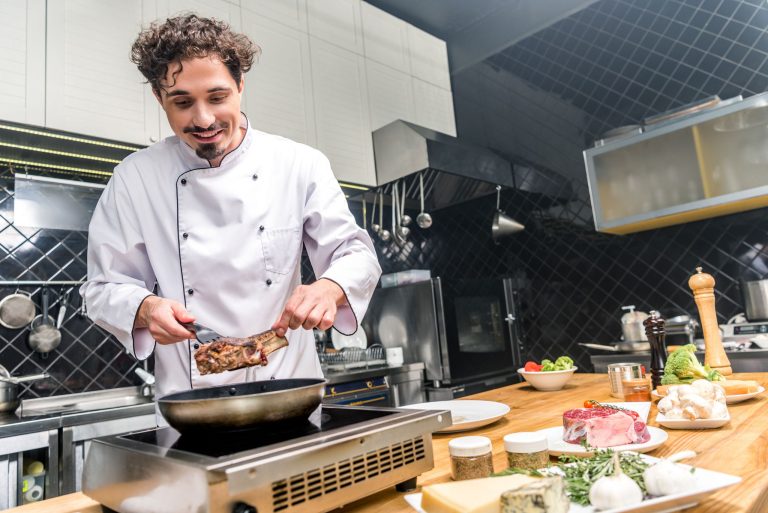In the highly competitive hospitality industry, providing an outstanding user experience (UX) on your website is crucial for attracting and retaining customers, driving bookings, and, ultimately, achieving business success. With more and more travellers relying on online platforms to research and book their accommodations, dining, and leisure experiences, having a user-friendly, engaging, and visually appealing website has never been more important.
In this comprehensive guide, we will delve into the world of UX design for hospitality websites, shedding light on its vital role in nurturing customer relationships, fostering loyalty, and driving conversions. We will outline the core principles of exceptional UX, such as responsive design, intuitive navigation, compelling call-to-actions, captivating visual elements, and fast-loading pages. Additionally, we will offer practical tips and best practices to help you optimise your website’s user experience, enhancing its appeal to your target audience and maximising its potential for growth.
1. Embracing Responsive Design
Responsive design is a critical component of exceptional UX in hospitality website design, ensuring that your site adapts seamlessly to various devices and screen sizes. With an ever-growing number of travellers using smartphones and tablets to browse and book experiences, it is essential to cater to these users with a mobile-optimised website. Here are some key aspects of responsive design to consider:
– Flexible Layouts: Implement fluid grids and flexible images to ensure your website adjusts smoothly to different screen resolutions, providing an optimal viewing experience across devices.
– Touch-Friendly Elements: Incorporate larger buttons, intuitive navigation patterns, and easy-to-select form fields to facilitate touch-based interactions on mobile devices.
– Fast Loading Times: Optimise your site for speed, as users tend to abandon slow-loading websites. Compress images, minimise HTTP requests, and leverage browser caching to improve load times.
2. Enhancing Website Navigation
Intuitive navigation is vital for hospitality websites, allowing users to quickly access information, view offerings, and make bookings without hassle. An easy-to-navigate website can significantly boost your conversion rates and make a lasting impression on your customers. Keep these tips in mind:
– Clear Navigation Menu: Use a well-structured navigation menu with descriptive labels, making it simple for users to find the information they seek and take action.
– Breadcrumbs: Implement breadcrumbs to provide users with a sense of their location on your site and facilitate easy navigation back to previous sections.
– Search Functionality: Integrate a prominent search bar that enables users to locate content quickly within your website, catering to their specific needs and preferences.
3. Crafting Clear and Compelling Call-to-Actions (CTAs)
Effective CTAs are crucial for encouraging customers to take action on your hospitality website, guiding them to make bookings, submit enquiries, or sign up for newsletter updates. To create captivating call-to-actions that convert, follow these best practices:
– Visibility: Place your CTAs in prominent positions on your website, such as above the fold or within the main content area, ensuring they capture users’ attention.
– Clarity: Use clear, concise language with action-oriented verbs, such as “Book Now,” “Reserve a Table,” or “Subscribe,” to communicate the desired outcome.
– Contrast: Make your CTAs visually distinct from surrounding content by using contrasting colours or bold typography, enhancing their visibility and drawing users towards taking action.
4. Incorporating Engaging Visual Elements
Visual elements can significantly impact the user experience on hospitality websites, effectively conveying your brand’s personality and offerings and capturing the attention of visitors. By leveraging well-designed visuals, you can evoke emotions, showcase your facilities, and establish trust with your users. Consider these tips for implementing visuals on your website:
– High-Quality Images: Use professional-quality photography to showcase your accommodations, dining options, and amenities, create a sense of luxury and comfort, and provide users with a glimpse into the experience they can expect.
– Videos and Virtual Tours: Incorporate engaging video content and virtual tours that immerse users in your offerings, giving them a closer look at your facilities and enhancing their connection to your brand.
– Visual Consistency: Maintain a visual consistency throughout your website, reflecting your brand personality and creating a cohesive experience for users. This includes consistent fonts, colours, imagery, and design elements.
The Power of Exceptional UX in Hospitality Website Design
In the highly competitive hospitality industry, the user experience (UX) of your website plays an instrumental role in driving bookings, customer satisfaction, and business growth. By prioritising responsive design, intuitive navigation, compelling call-to-actions, and engaging visual elements, you can elevate your site’s appeal, create a lasting impression on visitors, and maximise your potential for success.
Let us at Studio Lore help you stand out from the competition and unleash the true potential of your hospitality website with our tailored design services. Our team of talented creatives is committed to delivering world-class solutions that cater to your unique business needs. Contact us today to start crafting a user experience that not only delights your customers but also drives bookings and fuels your growth.



